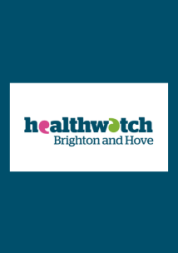Your views and ideas on Community Diagnostic Hubs

What are Community Diagnostic Hubs?
Community Diagnostic Hubs are intended to improve diagnostics across England.
In November 2020, the Diagnostics: Recovery and Renewal review led by Sir Mike Richards outlined several projects that could be delivered to improve diagnostics across England. The need for radical investment and reform of diagnostic services had already been recognised by the NHS Long Term Plan published in 2019.
One of the recommendations from the Richard’s review was to create Community Diagnostic Hubs (CDHs). These would be health centres based in the community, closer to the patients, that would provide diagnostic testing for them. The goal is that patients will be able to visit this facility (or facilities) and, where possible, have all their tests done in the same place and on the same day. There are many aims for the CDHs which are still being finalised but one of the key ones is to improve the patient experience in diagnosis. CDHs could prevent patients bouncing around the system, from healthcare site to healthcare site, from specialist to specialist, and instead enable them to visit one site in one day and receive a clear and timely diagnosis.
The NHS England and NHS Improvement team (NHSEI) is designing how Community Diagnostic Hubs will work – what services they will offer, what tests will be included, and where they should be located.
What did we do?
A big part of this Design Phase is defining what the patient experience should look like for those using the service. It is important that no matter where a patient visits a CDH in the country, they should have the same positive patient experience.
Healthwatch contacted NHSEI directly and offered to gather people's feedback on CDHs, as well as their own experiences of being diagnosed. Our study on what patients want from a local Community Diagnostic Hub was carried out from start to finish in just two weeks (1st -14th April) in order to meet NHS England and NHS Improvement (NHSEI) deadlines.
We spoke to 21 people from communities whose voices are often less heard: people with Black, Asian and minority ethnic backgrounds, people from the gay, lesbian, bisexual and trans community, younger people (under 25), and those with complex clinical conditions.
We asked them to give us their views on a draft version of patient expectations for CDHs and ways to improve these. We also carried out semi-structured interviews with people who wanted to share their experiences and ideas.
What did people tell us?
Top of the list is good communications. This includes good interpersonal skills, clear information as regards the process and about their condition. Good communication needs to be an ongoing proactive process that keeps patients fully informed about what is happening to them, with whom, where, and in what timescale – and that meets their language preferences and needs.
The stories people have told us about recent diagnoses describe less than satisfactory experiences, with people’s lives being on hold and “in limbo”.
Whilst people from the groups we spoke to did have some specifics related to their communities, their needs mostly related to been listened to, treated with dignity and their whole person being addressed.
However, some people with language and cultural needs will need some additional sensitivities when arranging services, such as translators and awareness of religious needs, awareness of gender issues and the availability of sign language services.
The Healthwatch report examining people’s experiences of being diagnosed and their ideas for improving the system bring a real focus to the debates and decisions that need to be made with and on behalf of the population we serve and will help inform the next stage of planning and thinking.
At a time when the NHS is looking to bring about transformational change that is designed to increase equity of access and improve outcomes it is important to us that the patient voice is heard. We have invited Healthwatch to join our Network Diagnostic Working group and look forward to working with them to help ensure that patients are at the heart of how we design the system.
What next?
We have fed your ideas into national guidance.
We have successfully fed local people’s ideas back to NHSEI who have used these to further develop patient experience requirements or standards: in other words, what patients want to see enshrined in the design of CDHs.
We are now working with NHS Commissioners.
Healthwatch see this patient engagement as the start of a much longer conversation. As well as sharing our findings with NHSEI, we have also shared the information we have collected with the Brighton and Hove Clinical Commissioning Group, and we are now working closely with them.

